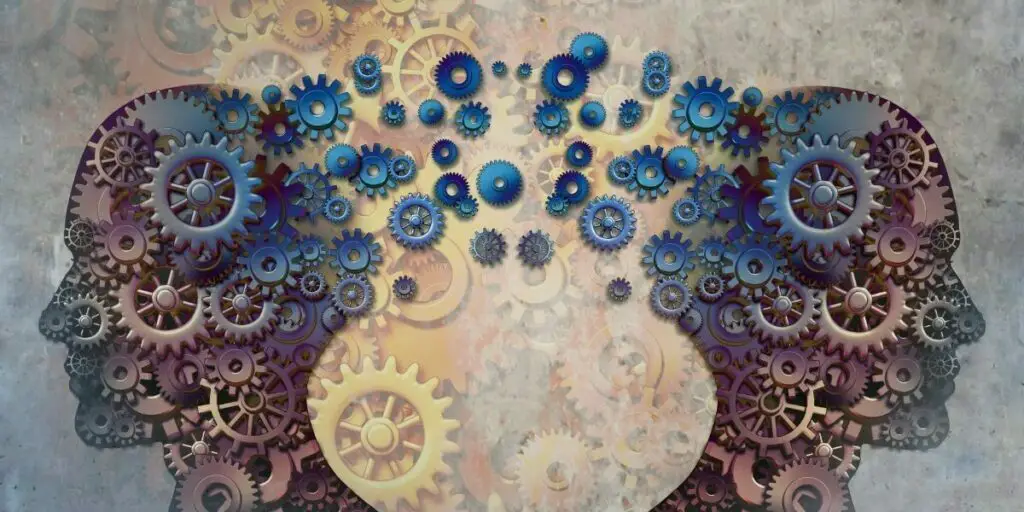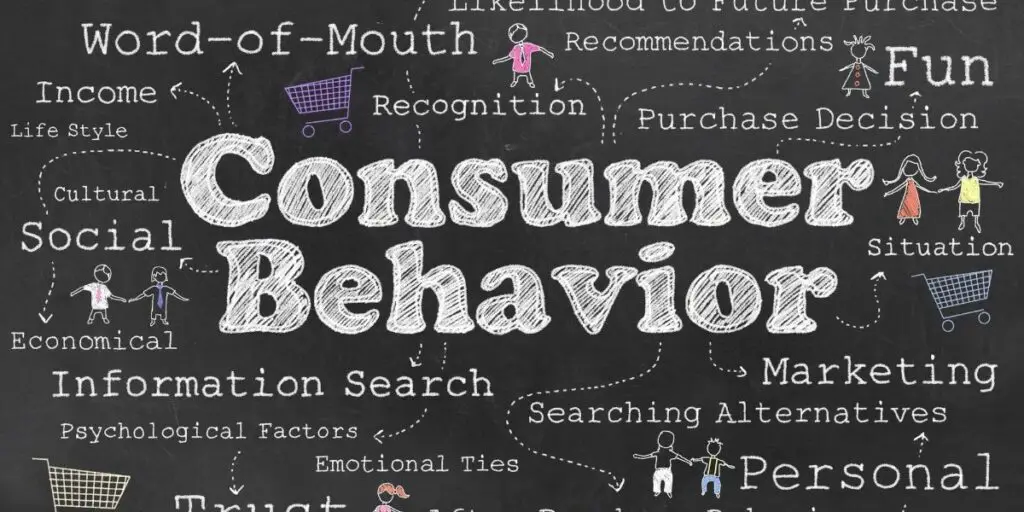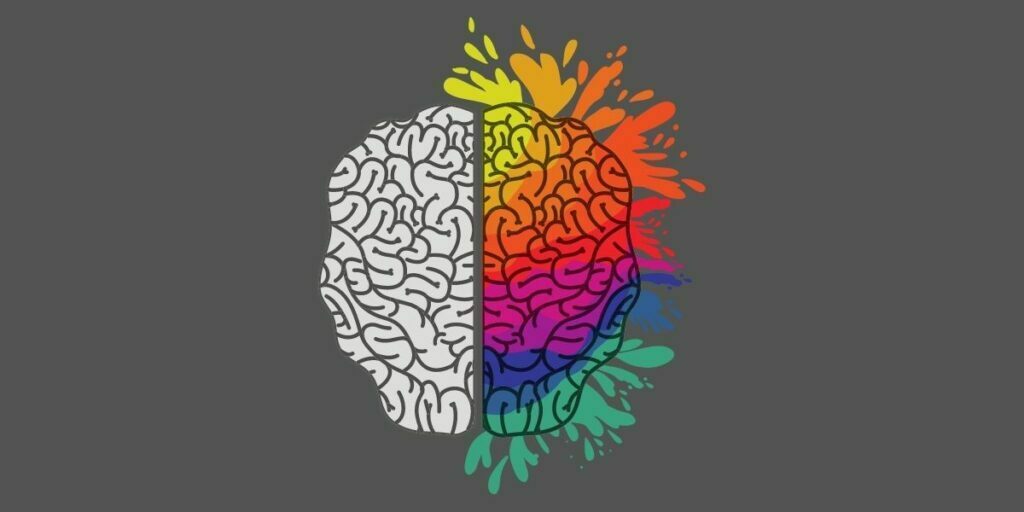Disclaimer: We sometimes use affiliate links in our content. For more information, visit our Disclaimer Page.
Despite spending billions of dollars on advertising, many companies still don’t understand how to connect with consumers and influence their behavior. Businesses are desperate to find new and innovative ways to reach consumers, but the old methods aren’t working anymore.
Consumer neuroscience is the answer. It is a relatively new field of study that combines neuroscience and marketing to understand consumer behavior. By understanding how the human brain works, we can better understand why people choose when it comes to spending money.
This blog post will intensely discuss consumer neuroscience, how it can help businesses improve marketing campaigns, boost sales, and much more.
Stay tuned for more information!
What is Consumer Neuroscience?

Consumer Neuroscience is the study of how neurological processes influence consumer behavior. This field of consumer research combines neuroscience techniques with marketing principles to understand why people choose when it comes to spending money.
Consumer neuroscientists can better understand what motivates people to make confident purchasing decisions by understanding how the human brain works. This information can then be used to improve marketing campaigns and boost sales.
Consumer neuroscientists use brain imaging, eye tracking, and electroencephalography (EEG). These neuroscience methods allow researchers to see how consumers’ brains react to different triggers, such as advertising messages or product packaging.
By understanding how consumers’ brains respond to these stimuli, marketers can make more informed judgments about what types of messages are likely to be most effective.
Related: Consumer Sovereignty
9 Consumer Neuroscience Tools and Techniques

Below are some of the most common tools and techniques are used for Consumer Neuroscience:
1. Brain Imaging
Brain Imaging is a technology that allows doctors and researchers to see the structure and function of the brain. This can be done in several ways, including MRI, PET, and CT scans. Brain Imaging can help doctors and researchers learn more about what is happening in the brain when a person is experiencing a specific condition or disorder. It can also help them develop new treatments for brain-related diseases.
It helps research and treats brain disorders, but it can also study normal brain function. For example, by using Brain Imaging techniques like MRI scans, scientists have been able to map out the different areas of the brain that are responsible for other functions, such as memory, vision, and movement.
It is a rapidly growing field, and new techniques and applications are being developed. As our understanding of the brain grows, so too does our ability to use Brain Imaging to improve our health and well-being.
2. Eye Tracking
Eye-tracking measures the point of gaze (where one is looking) or the motion of an eye relative to the head. An eye tracker is a device for measuring eye positions and eye movement. Eye trackers are used in research on the visual system, psychology, psychophysiology, marketing as an input device for human-computer interaction, and product design.
3. Electroencephalography (EEG)
Electroencephalography is a diagnostic test used to measure the brain’s electrical activity. This test is used to help diagnose conditions such as seizures, brain tumors, and stroke. Electroencephalography uses electrodes placed on the scalp to measure the amount of electricity produced by different brain parts. The test results can help doctors understand how the brain functions and identify any problems.
It is a painless test that takes about 60 minutes to complete. The person will lie down on a bed or table during the trial while electrodes are placed on their scalp. The electrodes are connected to a machine that measures the brain’s electrical activity. The person may be asked to breathe deeply or close their eyes during the test. After the test is complete, the electrodes will be removed, and the person can go about their day as usual.
Electroencephalography is a safe and effective way to measure the brain’s electrical activity. This test is often used in combination with other tests, such as MRI or CT scan, to diagnose conditions of the brain.
4. Functional Magnetic Resonance Imaging (fMRI)
Functional Magnetic Resonance Imaging (fMRI) is a medical imaging technique used to measure brain function. It uses the same principles as traditional MRI but adds a magnetic field gradient pulse which temporarily alters the blood-oxygen levels in specific brain regions. This change in blood-oxygen status can be detected using an MRI scanner and is used to map brain activity.
fMRI has become one of the most popular methods for studying the brain, as it is non-invasive and can be used on awake patients. As a result, many studies have used it, from investigating neurological disorders such as Alzheimer’s disease and stroke to mapping out the neural basis of cognition and emotion.
It is a valuable tool for understanding how the brain works and has the potential to revolutionize our understanding of mental health and neurological disorders.
5. Positron Emission Tomography (PET)
Positron Emission Tomography (PET) is a brain imaging technique that uses radiation to produce detailed images of the brain. PET scans can also diagnose and monitor many conditions, including cancer, Alzheimer’s disease, and other neurological disorders.
PET scans study how the brain responds to various stimuli in consumer neuroscience, such as advertisements and products. This information can help marketers and advertisers better understand how the brain responds to different stimuli and do more effective marketing research.
PET scans are also used to study the effects of drugs and other treatments on the brain. For example, researchers may use PET scans to learn how a new drug affects the brain’s function or monitor the brain’s response to a new treatment for Alzheimer’s disease.
It’s generally safe and has few side effects. However, they do involve exposure to radiation, which may be harmful if not used properly. Therefore, it is essential to talk to your doctor about the risks and benefits of any procedure before undergoing it.
6. Surveys and Questionnaires
Surveys and questionnaires are a fundamental part of any market research study. They allow researchers to collect data from a large number of people in a short amount of time. Additionally, surveys and questionnaires can measure customer satisfaction or understand customer behavior.
There are two main types of surveys: closed-ended and open-ended. Closed-ended surveys ask respondents to choose from predetermined answers, while open-ended surveys allow respondents to provide their responses. Questionnaires are similar to surveys, but they typically contain more questions than surveys.
When designing surveys and questionnaires, it is essential to think about the following factors:
- The purpose of the survey or questionnaire
- The target audience
- The type of data you want to collect
- The questions you want to ask
- How you will distribute the survey or questionnaire
- How you will collect the responses
Once you have designed your survey or questionnaire, you need to test it out with a small group of people to ensure it is accurate and easy to understand. Then, after making any necessary changes, you can distribute the survey or questionnaire to a larger audience.
7. Behavioral Experiments
Behavioral Experiments in Consumer Neuroscience research is a scientific field that examines how people make decisions, and their emotions influence those decisions. This research aims to understand consumer behavior better so that marketers can create more effective advertising and products.
One common way to study consumer behavior is through behavioral experiments. In these experiments, participants are asked to make choices under different conditions or complete tasks while their brain activity is monitored. This research can help marketers understand which emotions are most likely to influence consumer decision-making and what types of advertising or products are most likely to appeal to them.
While Behavioral Experiments in Consumer Neuroscience is still a relatively new field, it has already made significant contributions to our understanding of human behavior. For example, research in this area has helped us to understand better why people are more likely to make impulsive purchases when they are feeling happy and how advertising can be designed to target specific emotions. We will likely continue to learn more about how emotions shape consumer behavior with continued research.
8. Facial expression
In consumer neuroscience, facial expression is used to measure emotional responses felt by consumers as they interact with products or advertising. This information can improve the design of products and advertisements and better understand how consumers feel about different brands and products.
There are many different ways to measure facial expression. The most common method is facial coding, which involves trained observers who watch videos of people interacting with products or advertisements and code their faces according to predetermined rules. This method is reliable and valid, but it can be time-consuming and expensive.
Alternate methods of measuring facial expression include self-report measures, where consumers are asked to rate their emotional responses, and physiological measures, which measure changes in facial muscle activity or skin conductance. These methods are less expensive and time-consuming than facial coding, but they are also less reliable and valid.
No matter which method is used, it is essential to consider the context in which facial expression is being measured. For example, when measuring facial expression in response to an advertisement, it is necessary to consider whether the ad is positive or negative and intended to be funny or serious. The context in which facial expression is measured can affect the results, so it is essential to be aware of this when interpreting the data.
9. Galvanic Skin Response (GSR)
Galvanic Skin Response measures the electrical conductance of the skin. It is used as an indication of arousal, either physiological or psychological. When a person is aroused, the sweat glands on their skin will secrete more sweat.
This increase in sweat will cause a corresponding increase in the skin’s electrical conductance. GSR can measure changes in arousal in response to various stimuli, such as advertisements, product packaging, or even just the act of shopping. It is a valuable tool for consumer researchers, as it allows them to understand how consumers react to different stimuli.
Difference Between Neuromarketing and Consumer Neuroscience

Neuromarketing is the study of how marketing stimuli affect the brain and subsequent consumer behavior. Consumer neuroscience is a field of neuromarketing that applies neuroscience techniques to understand how the brain responds to marketing incentives.
While both neuromarketing and consumer neuroscience seeks to understand how the brain responds to marketing, some key differences exist between the two fields.
Neuromarketing is mainly concerned with understanding how marketing stimuli (e.g., ads, logos, brands) affect the brain and subsequent consumer behavior. In contrast, consumer neuroscience is concerned with understanding the mechanisms underlying how the brain responds to these stimuli. This includes how the brain processes marketing stimuli and how this affects consumer attitudes and behaviors.
Another key difference is that neuromarketing typically uses behavioral measures such as eye-tracking and electroencephalography (EEG) to measure brain activity. In contrast, consumer neuroscience often uses more sophisticated techniques such as functional magnetic resonance imaging (fMRI), positron emission tomography (PET), and magnetoencephalography (MEG).
Despite these differences, there is a lot of overlap between neuromarketing and consumer neuroscience. Both fields are concerned with understanding how the brain responds to marketing stimuli, and both use various techniques to do so. As such, the two areas can be seen as complementary.
What is consumer behavior?

It is the study of how people purchase and use goods and services. It encompasses everything from the initial decision to buy a product or service to how that product or service is used over time.
Consumer behavior research can help marketers understand what motivates people to buy certain products, how likely they will continue using them, and how best to reach and communicate with potential customers. This information can improve marketing strategies, product design, and even pricing.
Many factors can influence consumer behavior, including psychological factors (such as personal preferences and beliefs), social factors (such as family and peer groups), and cultural factors (such as religion and ethnicity). We discussed all aspects below in detail; keep reading!
4 Factors that affect Consumer Behavior
Several factors can influence consumer behavior, but some of the most common are listed below.
1. Social Factors
Many social factors can affect consumer behavior. These include family, friends, peers, culture, and even the media. These factors can influence what someone buys, how often they believe it, and why they buy it.
For example, family is often one of the most important social factors influencing consumer behavior. This is because family members can strongly influence each other’s buying decisions. For example, parents may set an example for their children by purchasing healthy foods or environmentally friendly products. Likewise, siblings or friends may encourage each other to buy certain products or brands.
Culture is another essential social factor affecting consumer behavior. This is because different cultures have different norms and values regarding spending money. For example, it is necessary to show off your wealth in some cultures by purchasing expensive items. On the other hand, saving money and buying practical items in different cultures may be more critical.
The media can also play a role in shaping consumer behavior. For example, the media can often dictate “in fashion” or “trendy.” For instance, if celebrities or models in magazines are wearing a particular style of clothing, then people may be more likely to buy that type of clothing.
Many social factors can affect consumer behavior. Family, friends, peers, culture, and the media are just a few examples. These factors can significantly impact what someone buys and how often they buy it.
2. Situational factors
Situational factors are essential in understanding how consumers behave. For example, the individual’s surroundings can significantly impact their purchase decisions.
For example, a person might be more likely to buy healthy foods if they are surrounded by other people doing the same thing. Similarly, a person might be more likely to purchase luxury items in an upscale environment.
Several different situational factors can affect consumer behavior. Some of the most critical include:
Physical environment: This can refer to the overall atmosphere of a place and specific features like lighting and temperature.
Social environment: This includes the people around when a person makes a purchase decision. It can also include factors like culture and social class.
The temporal environment includes the time of day, day of the week, and seasonality.
Task environment: This includes the specific goal that a person is trying to achieve with their purchase. For example, someone might be looking for a gift or finding the best deal on a new car.
Situational factors can have a significant impact on consumer behavior. Therefore, retailers need to be aware of these factors and how they can influence purchase decisions. By understanding the impact of situational factors, retailers can create an environment that is more likely to lead to sales.
3. Psychological factors
The brain is the most important organ for understanding consumer behavior. In addition, different brain structures are responsible for other psychological processes that affect how we interact with the world around us. For example, the amygdala is responsible for processing emotions like fear and anxiety, while the hippocampus is essential for forming memories.
When it comes to marketing and advertising, it’s essential to understand how these psychological factors can influence people’s decisions. For example, if a company wants to run a campaign to make people feel scared or anxious, the amygdala would be a key area to target. Alternatively, if a company wants to create a memory-based advertisement, the hippocampus would be the brain structure of focus.
It’s important to note that brain structures don’t work in isolation – they constantly interact to produce our thoughts, feelings, and behaviors. For example, the amygdala may signal the hippocampus to help it remember a particular fear-inducing event. Similarly, the prefrontal cortex (responsible for higher-level thinking) can influence the amygdala to help regulate emotions.
4. Personal factors (age, occupation, lifestyle, personality)
Several different personal factors can affect consumer behavior. These can include things like a person’s age, gender, income level, family situation, and even personality type. These things can influence a person’s decisions regarding purchasing goods and services.
For example, younger consumers are often more likely to take risks and be swayed by peer pressure when buying things. They may also be more impulsive in their decision-making than older consumers. Meanwhile, women are often seen as more emotional in their purchasing decisions than men.
And people who have higher incomes can usually afford more expensive items, while those in lower-income brackets may be more likely to purchase cheaper items.
So overall, different personality types can also affect consumer behavior. For example, more extroverted people may be more likely to enjoy spending money on things, while more introverted people may be more likely to save their money.
8 Effective Examples of Neuromarketing

Below are some of the most compelling examples of neuromarketing:
1. Using Effective Packaging to Boost Sales
Product packaging has a significant impact on consumer behavior and can be used to influence purchase decisions. Neuromarketing studies have shown that certain packaging design features can trigger positive emotions and increase the likelihood of purchase.
Effective packaging design strategies include bright colors, exciting shapes, and simple designs. Additionally, using images and words that evoke positive emotions can also be beneficial.
2. Creating Memorable Advertisements
Advertising is one of the most common applications of neuromarketing. By understanding how the brain processes information, advertisers can create more effective campaigns that are better able to grab attention and influence behavior.
Some neuromarketing research has shown that ads with higher levels of emotional arousal are more memorable and have a more significant impact on consumer behavior. Additionally, using humor and positive images can also be beneficial.
3. Playing on Consumer Fears
Another one of the most powerful ways to use neuromarketing is by playing on people’s fears. This can be done in several ways, such as showing images associated with anxiety or creating sensations similar to those experienced when afraid. This type of marketing can be very effective in getting people to act quickly or take action, as their fear response will drive them.
Two examples of neuromarketing campaigns that have played on people’s fears are listed below:
1. The “I can’t breathe” ad campaign by Amnesty International
This campaign used images and video footage of fatally injured people while being restrained by police. The emotional response of the ad was amplified by the fact that the victims could be seen gasping for breath, which would trigger a fear response in viewers.
2. The “This is your brain on drugs” PSA
This public service announcement featured an egg being fried in a pan, with the tagline “This is your brain on drugs.” The ad aimed to scare people into avoiding drug use, as it showed the potential dangers of doing so.
4. Different Payment Methods Generate Different Emotions
When it comes to payment methods, different emotions are associated with each. For example, paying with cash generally feels more concrete and satisfying than paying with a credit card. This is because paying with cash requires actual money, which we can see and feel in our hands. On the other hand, credit cards involve entering numbers into a machine and don’t provide the same sense of satisfaction.
5. Music Can Influence Shopping Behavior
The type of music played in a store can influence shoppers’ behavior. Studies have shown that slower-paced music leads people to spend more time in the store and ultimately buy more products. On the other hand, faster-paced music leads people to spend less time in the store and buy fewer products.
6. Evaluating Satisfaction Levels
Measuring satisfaction levels is an integral part of neuromarketing. After all, if a product or service doesn’t make consumers happy, they’re not likely to repurchase it. One way to measure satisfaction levels is by using facial expressions. Satisfied customers tend to have more relaxed facial muscles, while unsatisfied customers tend to have more furrowed brows.
7. The Power of Colors
The color of a product can influence how people perceive it. For example, studies have shown that people are more likely to buy blue or green products, as these colors are often associated with health and vitality. On the other hand, red is often associated with excitement and passion, making it a good choice for products meant to convey energy or excitement.
8. Decision Paralysis
We’ve all been there before – standing in front of an aisle stocked full of options, unable to decide what to buy. This is simply an annoyance for some, but it can paralyze others. This is referred to as decision paralysis, and it’s a natural phenomenon.
Consumer neuroscience studies have shown that we’re less likely to decide when presented with too many choices. This is because the human brain can only process so much information at once, and when faced with too many options, it simply shuts down.
This can be a significant problem for businesses, leading to lost sales. So what can be done to avoid this? One solution is to limit the number of options presented to customers. This can be done in various ways, such as using displays with limited choices or having a staff member help customers.
Related: Neuromarketing Examples
What are the four types of consumer behavior?
When it comes to consumer behavior, there are four main types: habitual buying behavior, variety-seeking behavior, dissonance-reducing buying behavior, and complex buying behavior. The type of consumer behavior that a person exhibits depends on the product they are looking for, the level of involvement with the product, and the differences between brands.
1. Habitual buying behavior
Habitual buying behavior is characterized by consumers who regularly purchase the same product with little consideration for other options. This type of behavior is often seen with products considered necessities, such as food and household items. Brand loyalty is usually not a significant consideration for habitual buyers, as they are more likely to purchase the most affordable product or easiest to obtain.
2. Variety-seeking behavior
Variety-seeking behavior is exhibited by consumers who are always looking for new and different products to try. This type of behavior is often seen with products that are considered to be non-essential, such as clothing, cosmetics, and electronic gadgets. In addition, variety-seekers are often willing to switch brands if they find a product that is better suited to their needs or preferences.
3. Dissonance-reducing buying behavior
Dissonance-reducing buying behavior is characterized by consumers who purchase a product to reduce the cognitive dissonance that they feel about it. This type of behavior is often seen with products considered luxury items, such as cars and jewelry. For dissonance-reducing buyers, brand loyalty is often a significant consideration. As a result, they are more likely to purchase the product from the brand they associate with the highest quality or prestige.
4. Complex buying behavior
Complex buying behavior is exhibited by consumers who purchase a product after considering different factors. This type of behavior is often seen with products that are deemed to be high-risk, such as health and beauty products. Complex buyers often do a lot of research before making a purchase, and they are more likely to switch brands if they find a product that is better suited to their needs or preferences.
Difference between neuroscience and cognitive neuroscience
Neuroscience and cognitive neuroscience are both studies of the brain, but they differ in their focus. Neuroscience is the study of the structure and function of the brain. In contrast, cognitive neuroscience studies how the brain enables cognition or the ability to think and learn.
Cognitive neuroscience is first appeared in 1997 (by Mike Gazzaniga) as a merger of cognitive psychology and neuroscience. It seeks to understand how the brain enables cognition by studying the relationship between brain structure and function and cognitive abilities such as memory, attention, and decision-making.
One of the critical goals of cognitive neuroscience is to develop models of the brain that can explain how different regions of the brain work together to enable cognition. This involves studying healthy brains and brains affected by neurological conditions such as Alzheimer’s disease, Parkinson’s disease, and schizophrenia.
Cognitive neuroscience has made significant advances in our understanding of how the brain works, but there is still more to learn. The field is constantly evolving, and discoveries are made every day.
Why is the use of neuromarketing so important?

Neuromarketing is a field of marketing that uses neuroscience techniques to understand the way consumers think and feel about products and services. This information can then be used to make more effective marketing decisions.
There are many benefits to using neuromarketing, including getting a more accurate picture of consumer behavior, understanding the emotions associated with different brands, and detecting subtle changes in consumer preferences.
Neuromarketing is becoming increasingly important as we move into an age where consumers are more skeptical about traditional marketing techniques. Companies can better understand what motivates customers and how they make decisions by using neuroscience techniques. This information can then be used to create more effective marketing campaigns that connect with consumers emotionally.
Neuromarketing can also be used to understand how consumers perceive different brands. This information can create more effective marketing strategies that focus on the emotions associated with a particular brand.
Top 8 Benefits of neuromarketing and consumer neuroscience
- Better insights into consumer behavior – Neuromarketing and consumer neuroscience help businesses understand why consumers make their decisions. This can be extremely valuable in developing more effective marketing and advertising strategies.
- Increased ROI – Because neuromarketing and consumer neuroscience provide better insights into consumers’ thoughts and motivations, businesses can achieve a higher ROI for their marketing dollars.
- More effective targeting of consumers – By understanding how different types of consumers respond to various messaging, businesses can more effectively target their advertising efforts.
- The Greater understanding of what works – With neuromarketing and consumer neuroscience, companies can test different marketing approaches and determine which are most effective. This helps them save time and money while achieving better results.
- Improved customer engagement – When businesses understand what motivates their customers, they can create messaging that engages them more effectively. This leads to increased customer loyalty and advocacy.
- More effective brand positioning – By understanding how consumers perceive their brands, businesses can make the necessary adjustments to ensure they are positioned in the most favorable light.
- Greater insight into product development – Neuromarketing and consumer neuroscience can help companies understand what features and functions consumers want in their products. This can result in more successful product launches.
- Increased competitive advantage – Businesses that use neuromarketing and consumer neuroscience gain a competitive edge over those that don’t. This allows them to attract better and retain customers and achieve more outstanding market share.
What are some of the types of Neuroscience?
There are many different types of neuroscience, each with its focus and area of study. However, some common types of neuroscience include computational neuroscience, developmental neuroscience, Cellular, and molecular neuroscience, Systems Neuroscience, Translational and Clinical Neuroscience, behavioral neuroscience & cognitive neuroscience. Each type of neuroscience uses different techniques and methods to understand the brain and nervous system.
1. Computational Neuroscience
Computational neuroscience studies the brain and nervous system using mathematical models and simulations. It is a relatively young field that combines computer science, mathematics, physics, and biology elements. Computational neuroscience is used to understand how the brain works, both at the level of individual neurons and larger neural circuits. This knowledge can then develop new treatments for neurological diseases and disorders.
It is a powerful tool for understanding the brain because it allows researchers to test hypotheses and make predictions that can be verified through experiments. For example, using computational models, scientists can investigate how changes in the structure of a single neuron might affect the function of an entire neural circuit.
2. Developmental neuroscience
Developmental neuroscience studies how the brain develops both structurally and functionally. This includes everything from prenatal development to adolescence. One of the developmental neuroscience’s main goals is to understand better how disorders such as autism spectrum disorder and ADHD develop. Researchers in this field use various techniques, including MRI scans, EEGs, and genetic analysis, to study how the brain changes over time.
One of the most exciting research areas in developmental neuroscience is understanding how the brain creates new neurons throughout life. This process, called neurogenesis, is thought to play a role in learning and memory. Researchers are still working to understand all of the factors that influence neurogenesis. Still, they believe that it may be possible to promote neurogenesis through interventions such as exercise or cognitive stimulation.
There are many other exciting research areas in developmental neuroscience, including how the brain develops during puberty and how the social environment affects brain development. Developmental neuroscience is a rapidly growing field, and there will be many more exciting discoveries in the years to come.
3. Cellular and molecular neuroscience
Cellular and molecular neuroscience study the brain’s development, anatomy, and physiology by examining its cellular and molecular structure. It is a broad field that draws on principles from biology, psychology, chemistry, physics, mathematics, and statistics. By understanding the cellular and molecular mechanisms that underlie brain function, we can better understand how the brain works and develop treatments for diseases that affect it.
Cell neuroscience studies the structure and function of neurons, the cells that make up the nervous system. Molecular neuroscience examines the molecules that influence neuronal function, including genes, proteins, and neurotransmitters. These two fields provide a comprehensive picture of how the brain works at the cellular and molecular level.
4. Systems neuroscience
Systems neuroscience is a branch of neuroscience and systems biology that examines the structure and function of neural networks and systems. It aims to understand how these circuits and systems give rise to the complex behaviors exhibited by animals, including humans.
To this end, systems neuroscientists use various techniques, including electrophysiology, imaging, and behavioral experiments.
One of the critical goals of systems neuroscience is to uncover the neural mechanisms underlying cognition and mental disorders. For example, much research in systems neuroscience is focused on understanding how the brain processes information and how this can go awry in conditions like Alzheimer’s disease or schizophrenia.
5. Translational Neuroscience
The study of the nervous system in its entirety, from cellular to systems levels and beyond. The field of research applies neuroscience research to convert or generate clinical applications and novel therapies for neurological diseases.
Translational neuroscience aims to bridge the gap between preclinical research and clinical practice to improve patient care and outcomes. To achieve this goal, translational neuroscientists must work closely with clinicians, patient advocacy groups, and industry partners to develop safe and effective therapies.
Final Thoughts
Consumer neuroscience is a fascinating field of study that is constantly evolving. By understanding how the brain works, researchers can develop effective advertising stimuli, and also, it can help create better treatments for mental diseases. Overall, with so many compelling benefits, it will be a field with many more exciting discoveries in the years to come.
What do you think about consumer neuroscience? Do you find it interesting or beneficial? Let us know in the comments below!
Thanks For Reading!
Frequently Asked Questions (FAQs)
Who coined the term neuroscience?
Francis Schmitt, a biophysicist from the Massachusetts Institute of Technology, coined the term neuroscience in the early 1960s. He is considered one of the founders of this field of study.
What is Behavioral science?
Behavioral science is the study of human behavior. It encompasses various disciplines, including psychology, sociology, anthropology, and economics. Behavioral scientists use research methods from all these disciplines to understand why people behave the way they do.
It began to emerge in the early 1900s when psychologists systematically started to study human behavior. It has come a long way since then, and today it is recognized as a vital field of study.
What are Physiological signals?
Physiological signals are bodily signals that can be measured and quantified. They include heart rate, respiration rate, blood pressure, and body temperature. These signals can provide important information about a person’s health and well-being. For example, they can indicate whether someone is under stress or relaxation depending on the signal.
Physiological signals can also monitor medical conditions and track treatment progress. In some cases, they can even be used to predict health problems before they occur.
How do you become a neuro marketer?
To become a neuro marketer, you need to have a strong background in marketing, advertising, or consumer behavior, with courses in psychology or neuroscience. You may also want to consider getting a master’s or Ph.D. in marketing, business, economics, or psychology, which will give you the scientific foundation you need for a successful career in neuromarketing.
One example of social neuroscience is the study of oxytocin and placebo. When humans receive oxytocin, it can affect their social behavior towards other people. Additionally, measuring skin conductance responses (SCRs) can help researchers isolate subconscious thoughts from conscious ones. SCRs are the body’s sympathetic response to external stimuli and thus can provide a measure of someone’s subconscious reactions.
What is an example of a neuroscience perspective in psychology?
The neuroscience perspective in psychology looks at the brain and nervous system to better understand behavior. This approach emphasizes the role of biology in psychological phenomena. Researchers who take this perspective use techniques such as brain imaging to study how the structure and function of the brain relate to behavior.
This perspective has led to important discoveries about the relationship between the brain and mental disorders. For example, research has shown that certain brain regions are linked to specific psychiatric disorders. This knowledge can help us develop better treatments for these conditions.
What subjects are needed for neuroscience?
To study neuroscience, you will need to have a strong background in biology and chemistry. You should also be familiar with physics, as many neuroscience principles are related to the physical world. Additionally, you will need to be proficient in math, particularly calculus and statistics. Finally, studying neuroscience requires excellent critical thinking and problem-solving skills.
How many years does it take to study neuroscience?
Most neuroscientists complete their Ph.D. within five to six years. This program usually involves a lot of independent research and lab work. It can be a very challenging but also rewarding field of study. Neuroscientists are responsible for understanding how the brain works, and they often contribute to our understanding of mental disorders and neurological diseases.
What jobs can I do with a neuroscience degree?
If you’re a neuroscience graduate, there are many options for employment available to you. For example, you could find work in research or academic institutions, health care organizations and hospitals, biotechnology/chemical industries, clinical psychology practices, governmental organizations, mental health clinics, non-profit and non-governmental organizations, or pharmaceutical companies.
With your skills and knowledge, you could make a difference in the lives of those suffering from neurological disorders, help to advance our understanding of the brain, or develop new treatments and cures for diseases. Whatever path you choose, a neuroscience degree can open up possibilities.
What is the future of neuroscience?
Neuroscience will continue to develop and improve in the future. For example, organ systems will be recognized as interrelated components of our biological makeup, allowing for information and treatment choices to be shared. In addition, treatments will continue to advance in other areas, such as engineering and physics, resulting in less invasive or even completely non-invasive therapies. This will lead to greater patient satisfaction and a higher quality of life for those suffering from neurological diseases.





